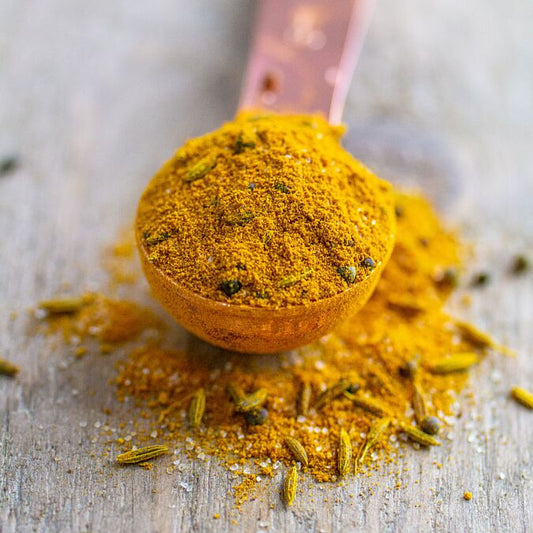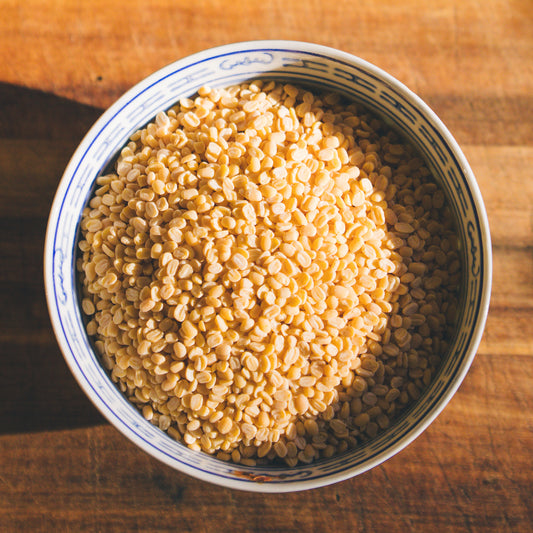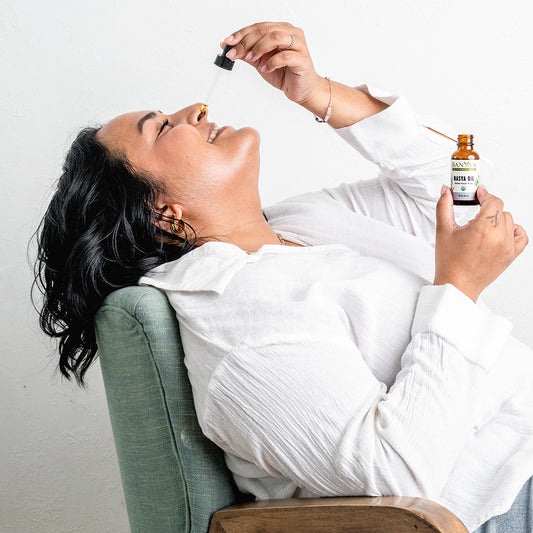Incorporating the practice of yoga into a cleanse can facilitate a deeper cleansing experience and offer a supportive addition to a kitchari monodiet.
The purpose of yoga is to align the mind, body, and breath, creating stability, calmness, clarity, and a sense of inner peace. Through this, we access the opportunity to be present in this moment rather than spinning our wheels on the what-ifs of the future and the regrets of the past.
When we're present in this moment, we are able to find calm within. This calmness allows the mind and body to more readily release toxins.
As you choose a yoga practice to facilitate cleansing, focus on incorporating poses that feel supportive and opening, rather than those that push you to your limits. This may be different than the yoga you practice in your daily life.
Basic Tips for Practicing Yoga During Your Cleanse
Asanas that are most beneficial for cleansing include those that:
- Move prana, or life force energy, through the body
- Focus on opening or twisting the abdominal region
Movements should be slow and calm with an inhale and exhale that are equal in duration and intensity.
Notice how you feel during each pose and notice where you feel it in your body. The direct experience of each pose will let you know how it is serving you.
To gain the cleansing benefits of yoga, practice for 10–20 minutes each morning. Using some or all of these poses, tailor your practice to what you need each day based on your energy level and constitution type.
Balance Your Doshas with Your Yoga Practice
As you practice, you can also offer balance to your constitution (prakriti) and current state of balance (vikriti).
- Working at a slow pace, combined with more seated and lying postures, is especially beneficial for people who are predominately vata.
- Cultivating a sense of surrender is important particularly for those prone to excess pitta.
- For those with a kapha constitution or imbalance, a flowing vinyasa (such as Sun Salutations) and standing postures provide a lightness that balances kapha's earth and water elements.
If you aren't sure of your constitution and current condition, take the Ayurvedic Profile™ quiz.
Whatever the focus of your practice, there are poses that can support any cleanse program. Integrate a few or all of the following practices into your daily yoga practice to enhance the effects of cleansing.
9 Poses for Cleansing
Bound Angle Pose (Baddha Konasana) with a Gentle Backbend
Benefit: This pose opens the abdominal area to allow room for the digestive organs while supporting the spine.
How to: Sit directly on the floor or with hips up on a blanket or bolster. Place the soles of the feet together and allow the knees to drop naturally out to the sides. Place hands about six inches behind the sit bones with fingers facing away from the body.
On an inhale, lift the sternum toward the sky and allow the chest and abdomen to open. Arms are firm and straight, and the head remains in line with the spine (do not tilt head back to look up at the sky).
If you choose, on the exhale round the spine and bring the chin in toward the chest. Alternate between opening on the inhale and rounding the spine on the exhale.

Revolved Child's Pose (Parsva Balasana)
Benefit: The twisting action of this pose creates a “wringing” effect on the abdominal organs. When we reach under the opposite arm, the organs are twisted and wrung out. When we reach up and open the abdomen, fresh blood rushes back in to nourish the internal organs.
How to: Start on hands and knees on your yoga mat. Make sure the wrists are aligned directly under the shoulders and the knees are aligned directly under the hips.
On an inhale, press the left hand into the mat while the right arm lifts toward the sky. Allow the chest and abdomen to gently open as the arm lifts. On the exhale, reach the right arm under the left with the palm facing up. Flow between these two for several breaths.
On the last exhale, when you reach the right arm under the left, come down to rest on the right shoulder and let the right ear drop to the floor. Stay here for several breaths. On an inhale, come back to hands and knees and repeat on the left side.
Standing Forward Bend (Uttanasana)
Benefit: Forward bends encourage correct flow of apana vayu, the downward moving energy of the body. This supports healthy and complete elimination and menstruation.
How to: Standing at the front of the mat, place feet hip distance apart with toes pointing forward and feet parallel.
On an inhale, sweep arms out to the side and raise them overhead. On the exhale, dive forward, hinging at the hip and keeping the spine neutral for as long as possible. Arms can reach down toward the floor, or if that is not accessible, they can rest on the thighs or shins.
Allow the head and neck to relax toward the floor. Send the hips toward the sky while the heels reach toward the earth. Take a few breaths here and, on an inhale, rise up, reaching the arms up overhead. On the exhale, bring hands together and to the heart center.
Caution: Avoid bringing the head below the heart if you have glaucoma or retinal problems. This pose might be contraindicated for those with disc disease, sciatica, or a hiatal hernia.
Bow (Dhanurasana)
Benefit: This pose opens the abdominal area as well as massages the digestive organs.
How to: Begin Bow by lying on your stomach on the mat. Bend the right knee and reach behind with the right hand and grasp the ankle in the palm. Fingers should wrap around the front of the ankle and the thumb should be pointing down.
Repeat this same action on the left side so both ankles are held in their corresponding hand. Press the pelvis into the mat. On an exhale, lift the legs up and out, pressing the ankles into the palms and allowing the motion to lift the chest and the front of the shoulders. Inhale here and on the next exhale, release the ankles and drop the forehead to the mat.
Repeat 2–3 times. Optionally, you can stay in this pose for several breaths, noticing the gentle rocking motion created as the breath moves through the body.

Cobra (Bhujangasana)
Benefit: This pose opens and massages the abdominal area.
How to: Begin this pose by lying on your stomach on the mat. Place hands a little bit wider than the mat, spread the fingers wide and touch the fingertips to the floor, coming onto “spider” fingers.
With the forehead resting on the mat, exhale and press the top of the pelvis into the mat. On the next inhale, press gently into the fingertips and raise the head, chest, and upper abdomen from the mat.
Keep the head in line with the spine, do not throw the head back to look toward the sky. On the exhale, lower back down to the mat. Repeat 5–10 times.
Child's Pose (Balasana)
Benefit: Although very simple, this pose deepens cleansing by calming the central nervous system, therefore facilitating a sense of stability, calm, and support. In addition, this pose can help relieve gas and bloating and provide a gentle massage to the digestive organs.
This pose moves the spine in the opposite direction than that of backbends, so practicing this between back-bending poses can be balancing.
How to: Starting on hands and knees, on an exhale, reach the sit bones back toward the heels, and come into Childs Pose by resting the forehead to the mat. Arms can remain extending forward, or they can relax alongside the body. Stay here several breaths, pulling the abdomen toward the spine with each exhale.
Knees-to-Chest Pose (Apanasana)
Benefit: As its name indicates, this is another pose that encourages correct flow of apana vayu. It is especially beneficial for relieving gas. This is a wonderful pose for the end of a practice, before Savasana.
How to: Begin this pose by lying on your back. Bring knees in toward the chest and use the arms to hug them in. Relax the abdomen and stay here for several breaths. Optionally, you can rock from side to side to give a gentle massage to the muscles of the back.

Revolved Abdomen Pose (Jathara Parivartanasana)
Benefit: This pose gives the most intense twist of all the poses offered here. Twisting squeezes the abdominal organs and once the twist is released, a rush of blood is sent to the area to nourish the organs again.
The action can also mimic that of peristalsis, the muscular contractions that move waste through the intestinal tract, thus loosening waste products that may be stuck there.
How to: Begin Revolved Abdomen by lying on your back with arms outstretched like a “T” and palms facing up.
On an exhale, bring the knees in toward the chest. Inhale here and on the next exhale, drop the knees off to the right so the legs rest on the floor. (If the legs do not reach the floor, you can put a folded blanket under them for support.) Turn the head to the left.
Pressing the legs into the floor, twist the abdomen toward the left. The left shoulder may be lifted from the ground here, that's okay. Stay for several breaths, deepening the twist with each exhale. On an inhale, lift the legs back to center. Repeat on the other side.
Legs-Up-the-Wall (Viparita Karani)
Benefit: This pose helps to drain the lymphatic system and activates the parasympathetic nervous system, allowing relaxation and restoration. It is a nice cool down before Savasana or as an opening pose to a very gentle practice.
How to: Start Legs-Up-the-Wall by positioning your mat with the short side next to the wall. Sit on your mat with your hip touching the wall and legs out in front of you. Lie back and extend the legs up the wall. Allow the feet to roll out to the side if it feels comfortable. As an option, you can close your eyes. Stay here for several minutes.

Remember to aim for a balancing practice rather than one that is challenging. Most importantly, focus on the breath and cultivate positive thoughts to allow the mental/emotional aspect of cleansing to unfold.












